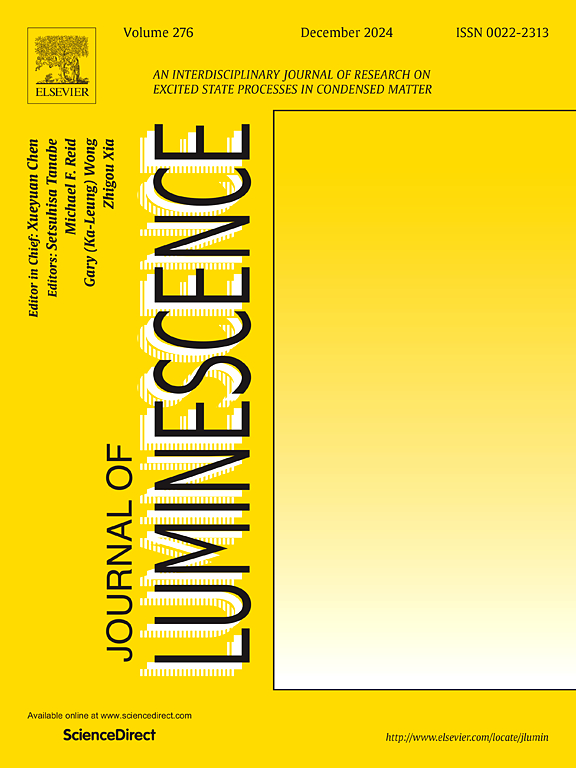Luminescence of CsI:Na crystal scintillator under synchrotron radiation excitation
IF 3.3
3区 物理与天体物理
Q2 OPTICS
引用次数: 0
Abstract
This work investigates the luminescence properties and energetic structure of emission centers created by NaCs isoelectronic impurities in a well-known CsI:Na scintillation crystal. Using synchrotron radiation excitation at 8 K, high-resolution spectroscopic techniques were employed to probe the electronic transitions and luminescent dynamics within the crystal. The study reveals distinct emission bands that can be attributed to both self-trapped exciton (STE) states and excitons bound to NaCs and defect-related centers, with a clear separation between fast and slow decay components. These findings provide deeper insight into how the NaCs impurity alters the emission behaviour of the CsI host, including modifications to energy transfer and relaxation processes.
同步辐射激发下CsI:Na晶体闪烁体的发光特性
本文研究了一种著名的CsI:Na闪烁晶体中NaCs等电子杂质产生的发射中心的发光特性和能量结构。利用8 K同步辐射激发,采用高分辨率光谱技术探测晶体内部的电子跃迁和发光动力学。该研究揭示了不同的发射带,可以归因于自捕获激子(STE)状态和与NaCs和缺陷相关中心结合的激子,并且在快衰变和慢衰变组分之间有明显的分离。这些发现为NaCs杂质如何改变CsI宿主的发射行为提供了更深入的见解,包括对能量转移和弛豫过程的修改。
本文章由计算机程序翻译,如有差异,请以英文原文为准。
求助全文
约1分钟内获得全文
求助全文
来源期刊

Journal of Luminescence
物理-光学
CiteScore
6.70
自引率
13.90%
发文量
850
审稿时长
3.8 months
期刊介绍:
The purpose of the Journal of Luminescence is to provide a means of communication between scientists in different disciplines who share a common interest in the electronic excited states of molecular, ionic and covalent systems, whether crystalline, amorphous, or liquid.
We invite original papers and reviews on such subjects as: exciton and polariton dynamics, dynamics of localized excited states, energy and charge transport in ordered and disordered systems, radiative and non-radiative recombination, relaxation processes, vibronic interactions in electronic excited states, photochemistry in condensed systems, excited state resonance, double resonance, spin dynamics, selective excitation spectroscopy, hole burning, coherent processes in excited states, (e.g. coherent optical transients, photon echoes, transient gratings), multiphoton processes, optical bistability, photochromism, and new techniques for the study of excited states. This list is not intended to be exhaustive. Papers in the traditional areas of optical spectroscopy (absorption, MCD, luminescence, Raman scattering) are welcome. Papers on applications (phosphors, scintillators, electro- and cathodo-luminescence, radiography, bioimaging, solar energy, energy conversion, etc.) are also welcome if they present results of scientific, rather than only technological interest. However, papers containing purely theoretical results, not related to phenomena in the excited states, as well as papers using luminescence spectroscopy to perform routine analytical chemistry or biochemistry procedures, are outside the scope of the journal. Some exceptions will be possible at the discretion of the editors.
 求助内容:
求助内容: 应助结果提醒方式:
应助结果提醒方式:


